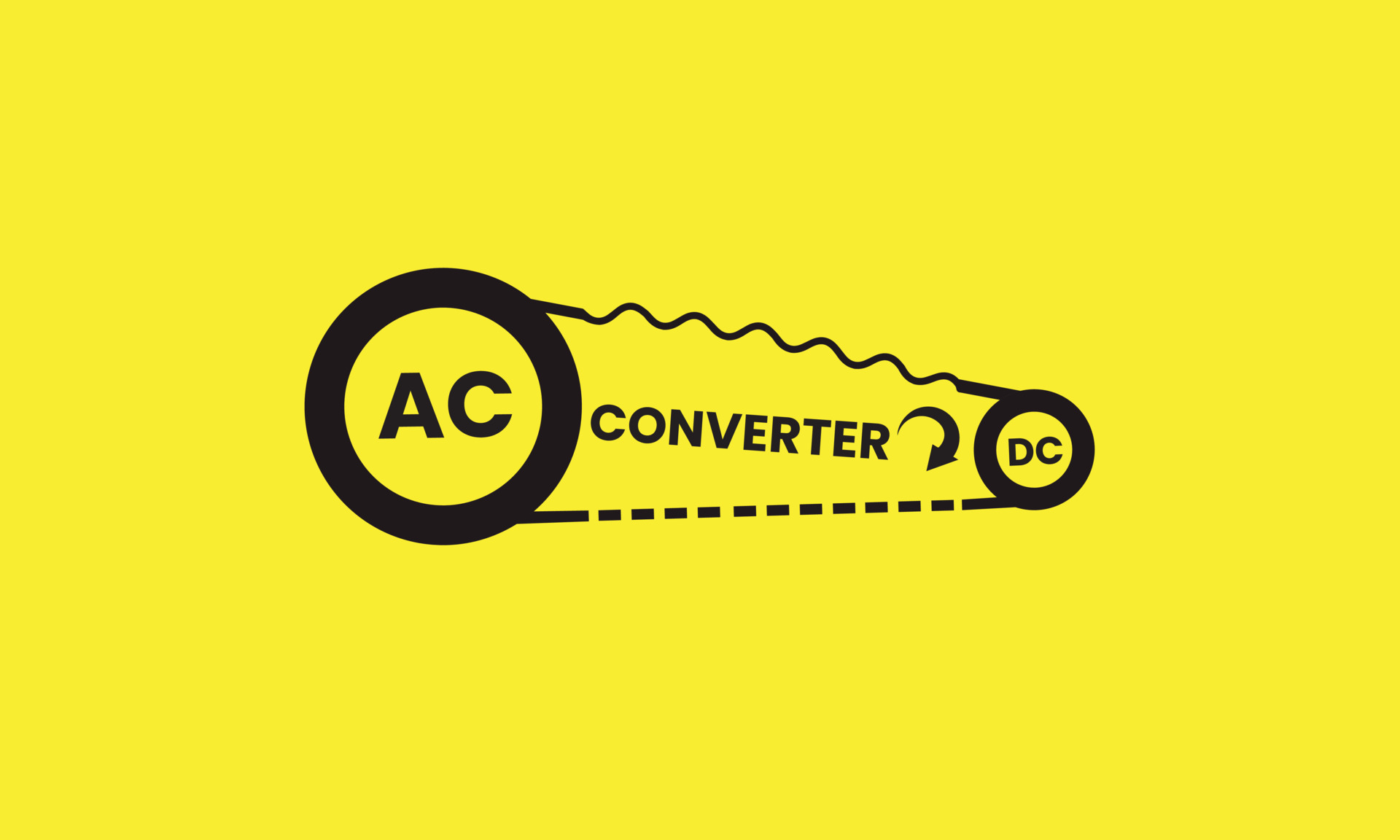When you hear “AC/DC current members,” your thoughts might just zip to a famous rock band, and that’s fair enough, so. But what if we told you there’s a whole other side to “AC” and “DC” that’s incredibly important, like, in our daily lives? It’s a bit of a twist, yet, we’re going to take a closer look at what “AC” and “DC” really mean, especially how they show up in different places, almost like they’re various individuals making up a big, sprawling family. This isn't about guitar solos or drum beats, you know, but about the very essence of how things work around us.
We’re talking about more than just music, you see. The letters “AC” and “DC” actually pop up in lots of different spots, from the way electricity moves through your house to how your Wi-Fi works, and even in the lingo that programmers use. It's really quite fascinating, in a way, to consider how these simple pairs of letters have so many different jobs and identities. Each one plays a distinct part, almost like a unique person contributing to a larger group.
So, get ready to discover the varied roles and appearances of “AC” and “DC” as we explore their many “current members” beyond the stage. We'll be looking at what they do, where they live, and how they help keep our modern world humming along. It’s a pretty interesting collection of characters, if you ask me, and you might just be surprised by how much they influence your day, actually.
Table of Contents
- The Core Identity - What is AC, Really?
- How Does AC Show Up in Our Everyday Tools?
- AC Power for Your Gadgets - A Handy Member of the AC/DC Current Members
- What About AC in the Digital Space?
- Wireless AC - The Unseen Current Members of Your Network
- Is AC Just About Electricity?
- "AC" in the World of Code - A Different Kind of Current Member
- What Other Roles Does AC Play in Power Systems?
- Managing Power with AC - Keeping Things Going with Current Members
- The Diverse Family of AC - More Than Meets the Eye
The Core Identity - What is AC, Really?
When folks talk about AC in a technical sense, they’re usually thinking about something called Alternating Current. This kind of electrical flow is a bit of a restless spirit, you know. Its strength and its direction are always changing, doing a sort of dance back and forth in a regular pattern. Over a complete cycle of this movement, the average value of its strength comes out to be zero, which is pretty neat, actually. This makes it quite different from Direct Current, or DC, where the flow just keeps heading in one steady direction without ever shifting its path. So, this fundamental definition is, in a way, the original “current member” of the AC family, the one that started it all.
This primary form of AC is what powers most homes and businesses, allowing electricity to travel long distances without losing too much of its oomph. It’s like the backbone of our modern power grids, allowing all sorts of gadgets and appliances to come to life. Without this particular "member," our world would look very, very different indeed, more or less. It’s a truly essential component, enabling everything from your toaster to the big lights in a stadium. It really is the workhorse of electrical energy, keeping things moving constantly.
It has a sort of rhythmic quality to it, this alternating flow. Imagine a tiny, invisible wave that carries energy, going up and down, back and forth, many times a second. This constant oscillation is what makes it so useful for transmitting power over vast stretches of land. It’s a very clever system, allowing for efficient energy delivery, and it’s been a cornerstone of electrical engineering for a long, long time. This particular “current member” has quite a history, you know, shaping how we live and work in countless ways.
- Emily Campagno Married
- The Andy Griffith Show
- %D1%81%D0%BA%D1%80%D0%B8%D0%BF %D0%B4%D0%B6%D0%B8%D0%BC
- Rick Ownes Wife
- Vanessa Lynn Williams Jim Skrip
Characteristics of AC
| Name | Alternating Current |
| Movement Style | Direction and strength shift regularly |
| Average Value Over Cycle | Zero |
| Primary Use | Powering homes and businesses, long-distance transmission |
| Distinguishing Feature | Unlike DC, its direction is not constant |
How Does AC Show Up in Our Everyday Tools?
Beyond the big power lines, AC also makes an appearance in the things we use every single day, which is pretty cool, if you think about it. Take, for instance, a portable charger, the kind you use to top up your phone or tablet when you’re out and about. Some of these handy devices come with their own built-in AC plug. This means that getting power into your charger is super simple, just like plugging in any other appliance. If there’s an outlet nearby, you can just pop it in and start refilling its energy reserves. It’s a straightforward way to keep your portable power ready for action, and it’s very convenient, actually.
These sorts of portable chargers often come with important safety stamps, like 3C certification, showing they meet certain standards. They also have things like protection against the battery getting too hot, which is a good thing for peace of mind, you know. A particular brand, wiwu, for example, is noted for its good looks and nice feel, offering a pleasant experience when you use it. So, this is one of those very practical "ac dc current members" that you might not even notice, but it’s there, making your life a little easier, pretty much.
It’s all about making sure that the power from the wall, which is AC, can get into your device in a safe and simple way. The design of these plugs and the internal workings of the charger are all set up to handle that alternating flow of electricity. It’s a small detail, perhaps, but it’s a vital one for keeping our personal electronics ready to go whenever we need them. This specific use case really highlights how AC is integrated into our everyday items, making them work seamlessly, sort of.
AC Power for Your Gadgets - A Handy Member of the AC/DC Current Members
So, when you see that little plug on your portable charger, you're looking at a direct connection to the world of Alternating Current. It’s a small but mighty example of how this kind of power is made accessible for personal use. The convenience of just finding an outlet and plugging in is something we often take for granted, but it’s all thanks to the way AC is distributed and then converted for our gadgets. It’s a truly helpful member of the "ac dc current members" group, always ready to provide energy.
What About AC in the Digital Space?
Now, let's shift gears a bit and talk about "AC" in a completely different context, one that’s all about getting online. When people mention "wireless AC," they're not talking about electricity flowing through wires, you know. Instead, they’re referring to a type of wireless technology, often linked to what’s called a wireless access controller, or just "AC" for short in that setting. There’s also the wireless access point, which people usually call an "AP." These two work together to help you connect to the internet without cables, basically.
Think of your typical home wireless router. It’s kind of a mix of both an "AC" and an "AP" rolled into one convenient box. This combination works really well for smaller areas, like a single room or a modest apartment. But what happens if you have a much bigger place? Say, a house with three floors, one on top of the other? In those larger spaces, you might need more dedicated "AC" and "AP" units to make sure everyone gets a strong, reliable signal. It’s a bit like having different team members to cover a bigger playing field, you know.
These wireless "AC" systems are all about making sure your devices can talk to the internet smoothly and quickly. They manage the flow of data through the air, directing it to where it needs to go. It’s a complex dance of signals and connections, but when it works right, it feels effortless. This version of "AC" is a very important part of our connected lives, allowing us to stream videos, browse the web, and stay in touch with others, pretty much.
Wireless AC - The Unseen Current Members of Your Network
So, when you’re enjoying a smooth internet connection at home, especially in a larger setting, remember the wireless "AC" and "AP" working behind the scenes. They are, in a way, the unseen "ac dc current members" of your network, ensuring that data flows freely and efficiently. They might not be as flashy as a rock star, but their role in keeping us connected is absolutely vital, you know.
Is AC Just About Electricity?
It’s interesting how a simple two-letter abbreviation can have such different meanings, isn’t it? While "AC" often makes us think of electricity, there’s another spot where "AC" pops up, completely unrelated to power, and that’s in the world of computer programming. When programmers are working on problems or challenges, they often submit their solutions to be checked. If a solution is correct and works as it should, it gets marked as "AC." This stands for "Accepted," meaning it’s good to go, more or less.
This idea of "Accepted" is a really important part of how programmers practice and get better at what they do. They tackle all sorts of problems, like those involving data structures or algorithms. After they write their code, they send it in to see if it passes the tests. If it earns that "AC" stamp, it means their solution is considered valid and has successfully solved the problem. It’s a very clear way to get feedback on their work, basically.
So, in this context, "AC" is a signal of success and correctness within the coding community. It’s a badge that says, "Yes, this works!" It’s a completely different kind of "current member" of the "AC" family, one that lives in the digital realm of logic and problem-solving. It’s fascinating how the same letters can signify such different things depending on the environment, you know. This "AC" helps programmers hone their craft, pushing them to write better and more efficient code, pretty much.
"AC" in the World of Code - A Different Kind of Current Member
Therefore, when a programmer says their code got "AC," they’re celebrating a small victory in the world of logic and algorithms. This "AC" is a testament to a solution that is "Accepted," making it a distinct and important "ac dc current member" in the realm of software development. It's a sign that the problem has been properly addressed and the solution is sound, really.
What Other Roles Does AC Play in Power Systems?
Beyond just delivering power to our homes, AC also plays a very clever role in how power systems are managed, which is quite intriguing, if you think about it. There’s a feature in power management settings, often found in computers, called “Restore AC Power Loss.” This setting is all about what happens when the electricity goes out and then comes back on. It controls whether your device will automatically turn itself back on after a power interruption, or if it will stay off until you manually press the power button, you know.
By default, this setting is usually set to “Power Off,” meaning if the power flickers, your computer will stay off when it returns. But you can change it to “Power On,” and then, if the electricity comes back, your computer will automatically start up. This is a very useful feature for servers or systems that need to be running all the time, ensuring they get back online quickly after a power hiccup. It’s a small but significant way that AC is involved in the continuous operation of our electronics, pretty much.
Another important job for AC in power systems involves something called Power Factor Correction, or PFC. The main purpose of PFC is to make sure the incoming AC electricity is nice and tidy, without any messy fluctuations. But, because PFC circuits usually use a "Boost" design, they also have a handy side effect: they can take a wide range of incoming voltages and bump them up to a steady, higher level, often around 400 volts. This is actually quite convenient for other parts of the power supply, as it gives them a consistent voltage to work with, in a way.
Managing Power with AC - Keeping Things Going with Current Members
So, whether it’s making sure your computer boots up after a power cut or tidying up the incoming electricity for a device, AC is deeply involved in the smart management of power. These are the quiet, behind-the-scenes "ac dc current members" that ensure our electrical devices run smoothly and reliably, making them truly essential players in the grand scheme of things, really.
The Diverse Family of AC - More Than Meets the Eye
It’s pretty clear now, isn’t it, that "AC" is a term with many hats, far beyond what you might first imagine. From the oscillating electrical flow that lights up our homes to the wireless signals that connect our devices, and even the "Accepted" status in programming challenges, "AC" shows up in a variety of important roles. Each instance is a distinct "current member" of a surprisingly diverse family, all playing their part in the intricate workings of our modern world. It's truly fascinating how one simple abbreviation can have such a broad impact, you know, touching so many different aspects of our daily lives.
Related Resources:



Detail Author:
- Name : Fabian Kunde
- Username : erica59
- Email : valentin76@yahoo.com
- Birthdate : 2005-02-19
- Address : 50765 Mabelle Ville Jessycamouth, WV 15452
- Phone : 651.688.2052
- Company : King PLC
- Job : Nuclear Power Reactor Operator
- Bio : Earum cum voluptas recusandae aut. Sequi officiis ut aut quia. Odit incidunt et et mollitia dignissimos enim voluptatibus error.
Socials
facebook:
- url : https://facebook.com/ffahey
- username : ffahey
- bio : Quia autem qui delectus iure consequatur vel.
- followers : 2082
- following : 1667
twitter:
- url : https://twitter.com/faheyf
- username : faheyf
- bio : Excepturi sit voluptates vel. Voluptatem consectetur quod architecto aut ipsam fugit sed. Totam sed nobis unde.
- followers : 2509
- following : 1675